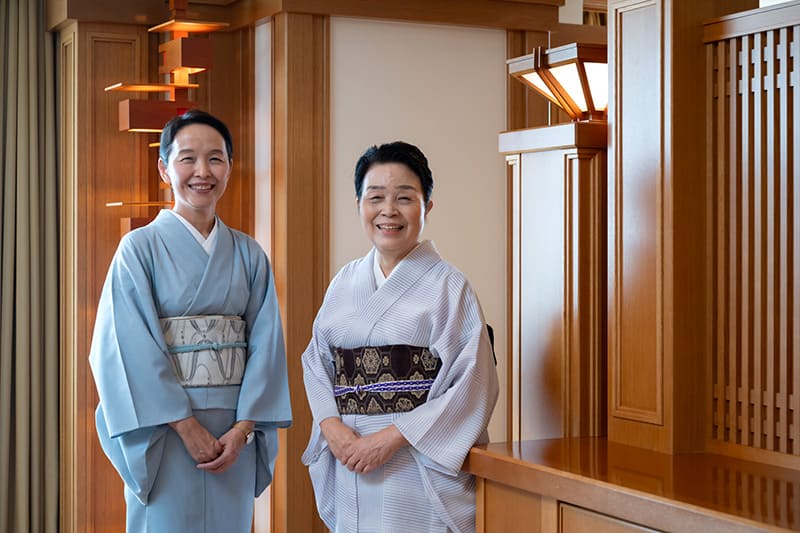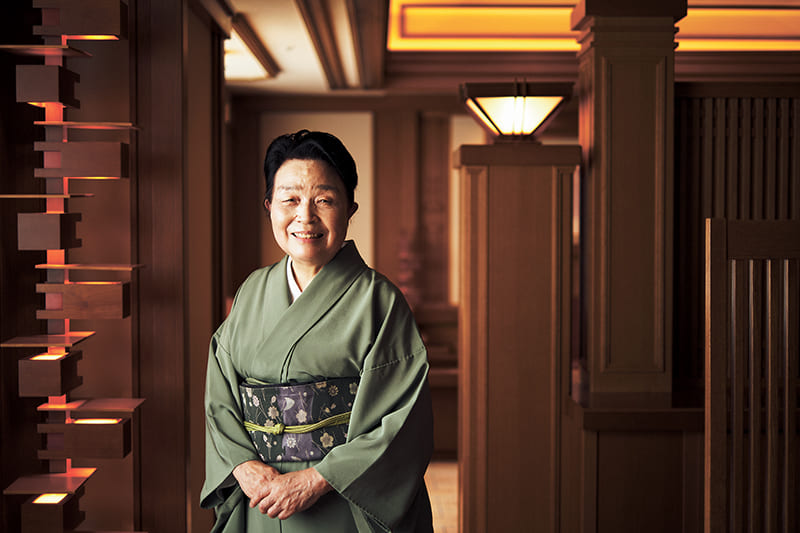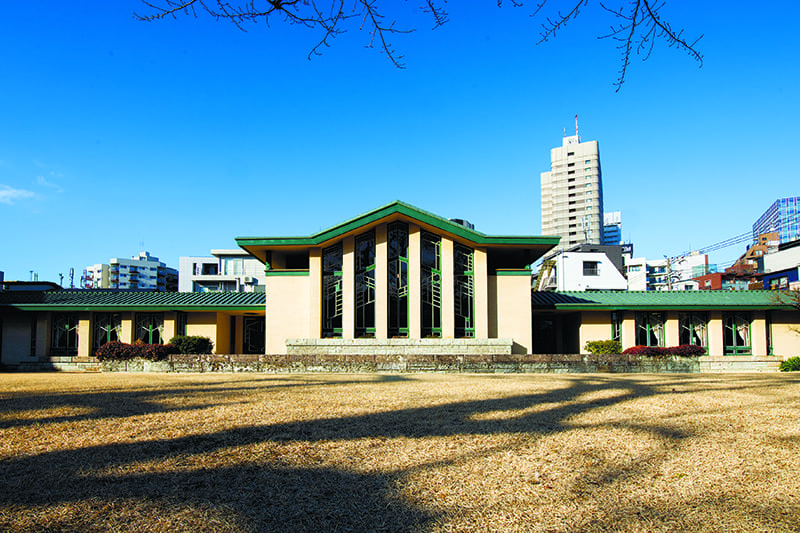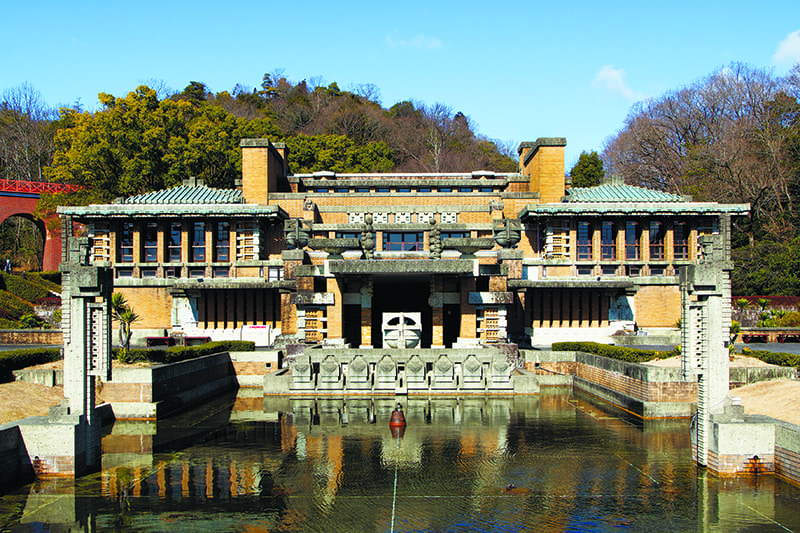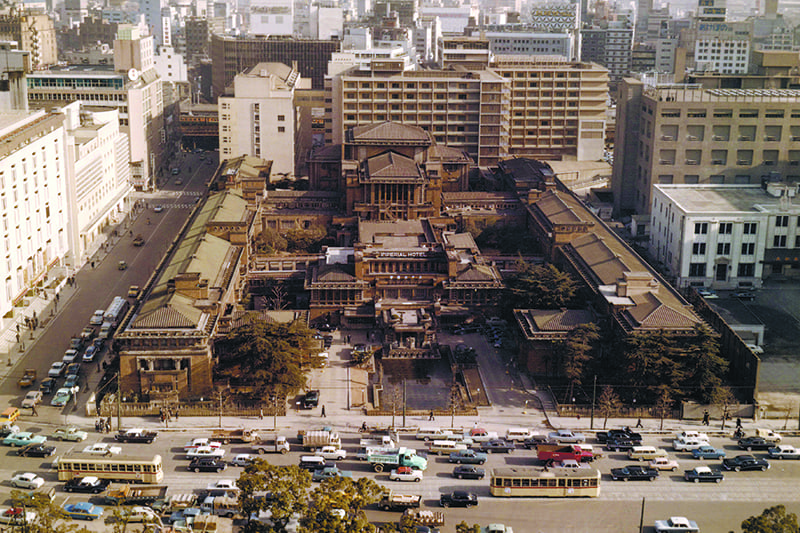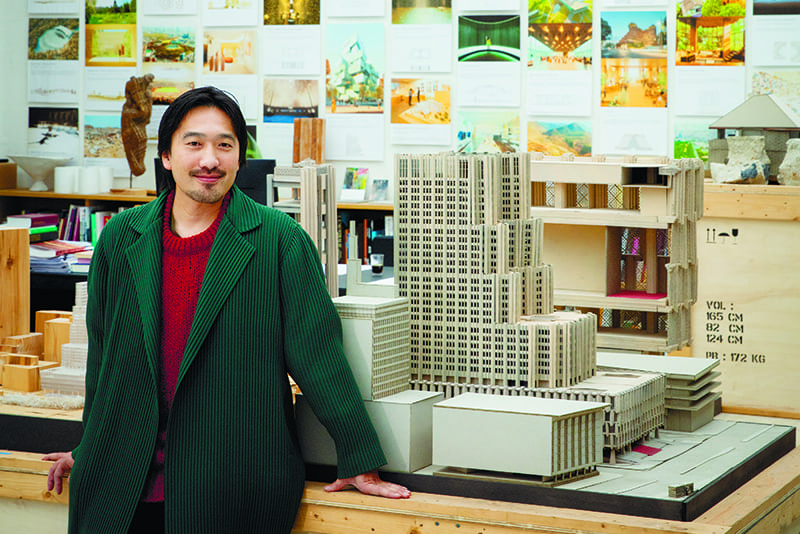February 25, 2022
Japan’s only Wright residence survives doom and disaster
YODOKO GUEST HOUSE
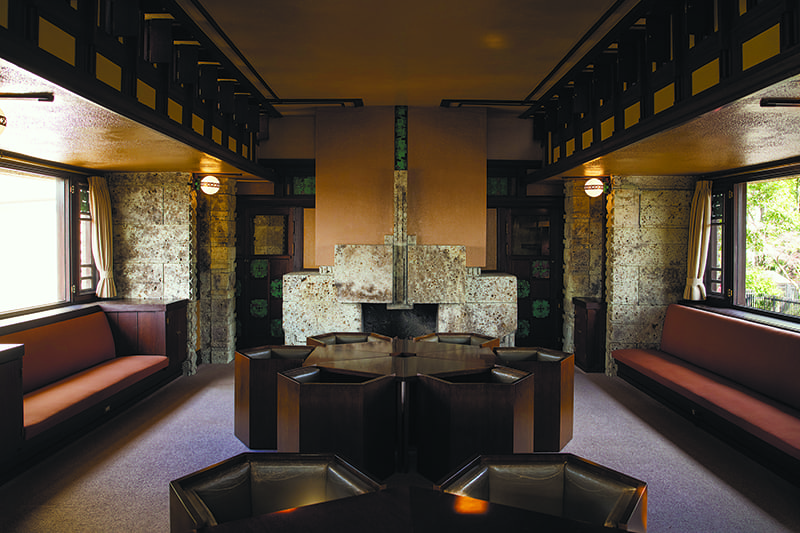
PHOTOS: KIYOSHI NISHIOKA
Located in Ashiya, a residential district between Osaka and Kobe, the Yodoko Guest House is Japan’s only Frank Lloyd Wright residence that survives in its original form. Wright designed the house in 1918 but returned to the United States in 1922, so the final design details and construction oversight were entrusted to his acolytes Arata Endo and Makoto Minami. Construction was completed in 1924.
The finished building was shown in the opening feature of the second issue of the famous architecture magazine “Shin-kenchiku” in 1925. In the accompanying article, Minami wondered about the master architect’s reaction, writing, “What feelings will Wright have when he sees the building now?” The question conveys his esteem for Wright and dedication to the project, as well as the depth of the mentor-student bond.
The structure has attracted international attention as well. When eight of Wright’s buildings were listed collectively as a World Heritage Site in 2019, the Yodoko Guest House was suggested as an additional candidate for inclusion. The residence is an early example of Wright’s skillful incorporation of natural terrain in his designs. Architectural historian Yutaka Mizukami described the building plan, which angles like a chevron, as “a major turning point in Wright’s planar composition methods.”
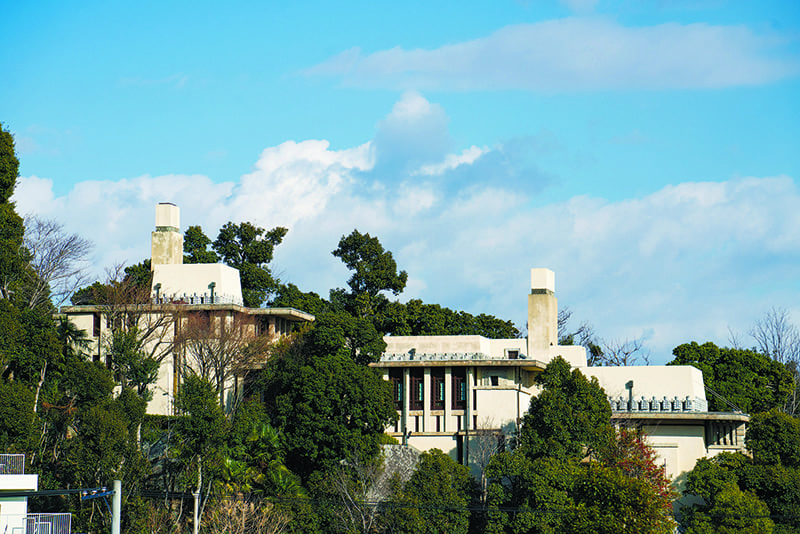
While living in Japan in 1918, Frank Lloyd Wright designed this residence as the secondary home of Tazaemon Yamamura, an eighth-generation sake brewer in Nada, Kobe. Completed in 1924.
● 3-10 Yamate-cho Ashiya-shi Hyogo Prefecture Tel: 0797-38-1720 Opening Hours 10:00~16:00
Closed on Monday, Tuesday, Thursday, Friday. Confirm if open before visiting.
Entrance Fee ¥500 https://www.yodoko-geihinkan.jp/en/
Today, the Yodoko Guest House is open three days a week and visitors can freely explore the building for an admission charge of ¥500. But there have been twists and turns along the way, including a threat of demolition and a major earthquake. Originally built as the secondary residence of the eighth-generation sake brewer Tazaemon Yamamura, the house became the property of an entrepreneur in 1935 and was acquired by its current owner, Yodogawa Steel Works, in 1947. In the early years it was used to entertain guests from the political and business spheres; later it was rented out as a private home and used as a dormitory for Yodogawa employees. The structure deteriorated with age, however, and in 1971 Yodogawa decided to demolish it and put up an apartment building in its place. Hearing about this plan, architects and others launched a campaign to preserve the residence. Discussions among the various parties bore fruit, and Yodogawa wisely decided to call off the demolition and replacement project. The building was preserved, and in 1974 it became the first reinforced concrete residence designated an Important Cultural Property of Japan.
Following the completion of repair and preservation work, the Yodoko Guest House was opened to the public in 1989 — but the Great Hanshin Earthquake struck in 1995. The building survived but was heavily damaged. According to Tadayuki Iwai, director of the residence, “The interior was a shambles, and there were various kinds of damage to the overall structure, including broken fittings and fixtures, shattered glass and splintered stone.”
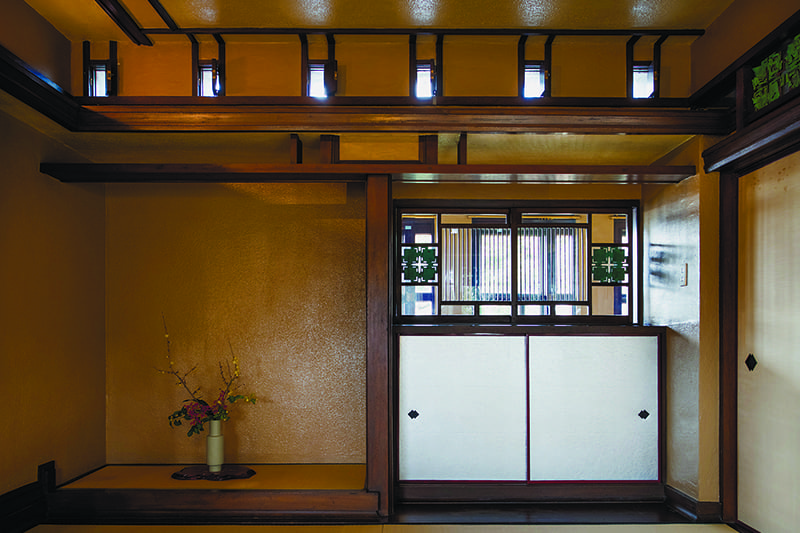
After three years of inspection and repairs, the guest house was restored, but its subsequent maintenance brought challenges. The mere presence of visitors causes stress and strain on delicate fixtures and decorative elements, including carved Oya stone and wooden fittings. Additionally, three decades after the building was opened to the public, roof leakage had become a regular occurrence. Over a two-year period starting in 2016, the roof was waterproofed and other repairs were carried out in order to preserve the building. Interior and exterior Oya stone and cast-stone ornamentation was restored, and the structure was beautifully revived. Still, said Iwai: “Maintenance is labor-intensive. Rain and wind come in through spaces in the old fittings, and the Oya stone deteriorates and splinters.” Nonetheless, he said, “We want many people to experience the house for themselves.” For this reason, as much of the residence as possible has been made accessible to the public, including a balcony and other outdoor spaces as well as behind-the-scenes areas such as a servant’s room, and spaces are arranged so that visitors can actually touch windows and interior fixtures.
“Surrounded by greenery, with a stream flowing nearby, the house has a wonderful feeling of unity with nature,” said Iwai. “I’d like everyone to witness the changes in the light and wind coming in through the many windows — changes created by the seasons and time.” To that end, he plans to continue overseeing the building’s maintenance with meticulous care and spreading the word about its unique beauty.
解体や震災を乗り越えた、日本唯一のライト住宅作品。
阪神間の邸宅街·芦屋にある旧山邑家住宅(ヨドコウ迎賓館)は、フランク·ロイド·ライトが設計した日本の住宅で唯一、竣工時の姿で現存する希少な建物だ。ライトは1918年に設計し1922年に帰国。実施設計は弟子の遠藤新と南信に託され1924年に竣工した。世界遺産のライト建築8作品への追加登録候補として注目される。
この建築は主に2つの危機を乗り越えた。最初の危機は1971年。オーナーの淀川製鋼所が解体を決める。しかし保存運動を受けて保存に転じ、重要文化財指定と保存修理工事を経て1989年から公開がはじまった。
だが1995年、阪神淡路大震災という2度目の危機が訪れる。倒壊は免れたものの構造体が損傷する等、被害は甚大。3年の調査·修理工事を経て復興した。
近年も2016年から2年がかりの保存修理工事があった。彫刻された大谷石や木製建具など造作や装飾が繊細なので、見学者を受け入れるだけでも負担になる。しかし「多くの方に魅力を体験してほしい」と淀川製鋼所は寛大な公開と熱心な維持管理をつづけている。
Return to Sustainable Japan Magazine Vol. 9 article list page

